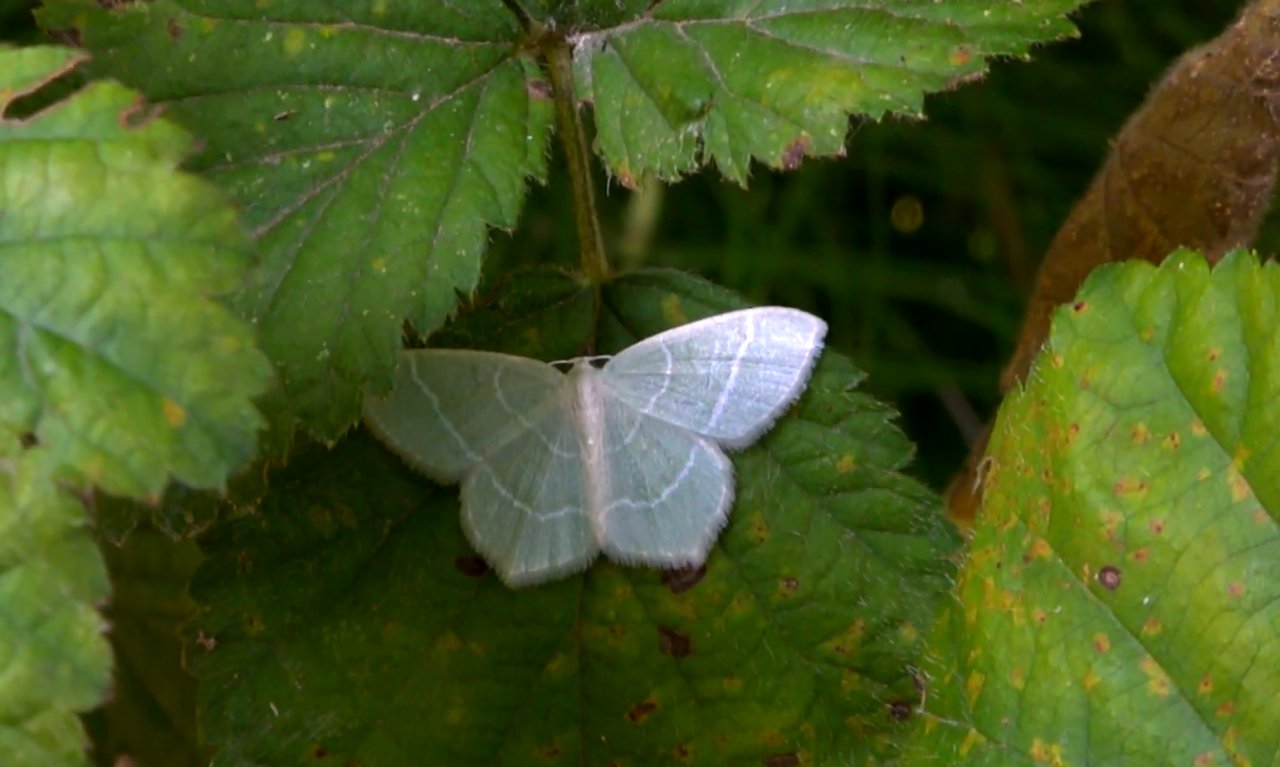Jodis lactearia
(Linneaus, 1758)
-
 Subfamily: Geometrinae, Jodiini
Subfamily: Geometrinae, Jodiini -
 Wingspan: 18-26 mm
Wingspan: 18-26 mm -
 Flight period: May - Aug
Flight period: May - Aug -
 Spread: Common
Spread: Common -
 Host plants: Polyphagous
Host plants: Polyphagous
Information
The Jodis lactearia also called Little Emerald is a moth of the Geometridae family, subfamily Geometrinae, with a wingspan of 18-26 mm.
It is distributed throughout Europe. * In Italy it is also present in Sardinia. *
Its range extends to the whole Palearctic region from Ireland to Japan. ***
The background color of the wings of Jodis lactearia is a delicate light green, but over time this fades to white.
There are two white medial lines on the front and rear wings. The white postmedian line is on both wings almost entirely parallel to the distal margin and not toothed.
The rear one is slightly angled.
The head, the thorax and the abdomen are in the background color of the wings. **
Sexual dimorphism is represented by bipettinate antennae in male thread-like in females.
univoltine moth, flies in the period between May and June, with a possible second generation in August.
It frequents wetlands, mixed woods and deciduous forests. She mostly flies at night and is attracted to artificial lights. ***
The caterpillars are green, often with a brown / purplish dorsal band. The head is light brown in color with cephalic capsules pointed upwards. **
It overwinters at the pupa stage. the pupa is light green, a dark line is visible through the abdominal segments. ****
The larvae are polyphagous feeding on Betulaceae such as Betula (birch), Corylus and Alnus (alder), of Ericaceae such as Vaccinium myrtillus (bilberry), Fagaceae
like Quercus (oak) and Fagus, and Rosaceae like Malus and Rubus.
* Lepidoptera mundi https://lepidoptera.eu/ - Fauna Europea https://fauna-eu.org/
** Bestimmungshilfe für die in Europa nachgewiesenen Schmetterlingsarten - http://lepiforum.de/
*** Roland Robineau, Guide de papillons nocturne de France, Delachaux et Niestlé, 2011 p.36
**** Lepidoptera and their ecology - http://www.pyrgus.de/


 EN
EN ITA
ITA
Social and publications